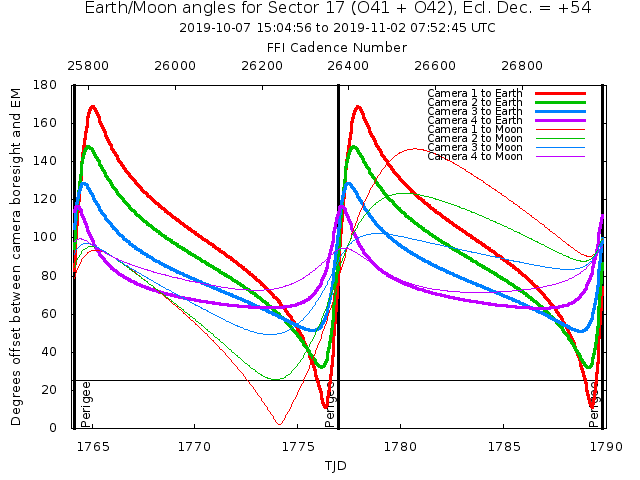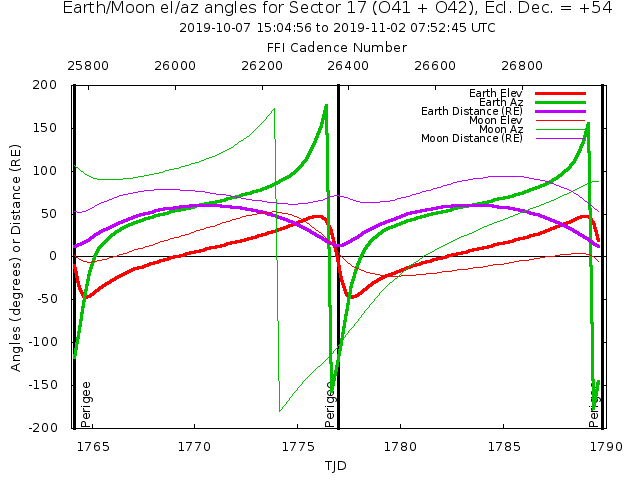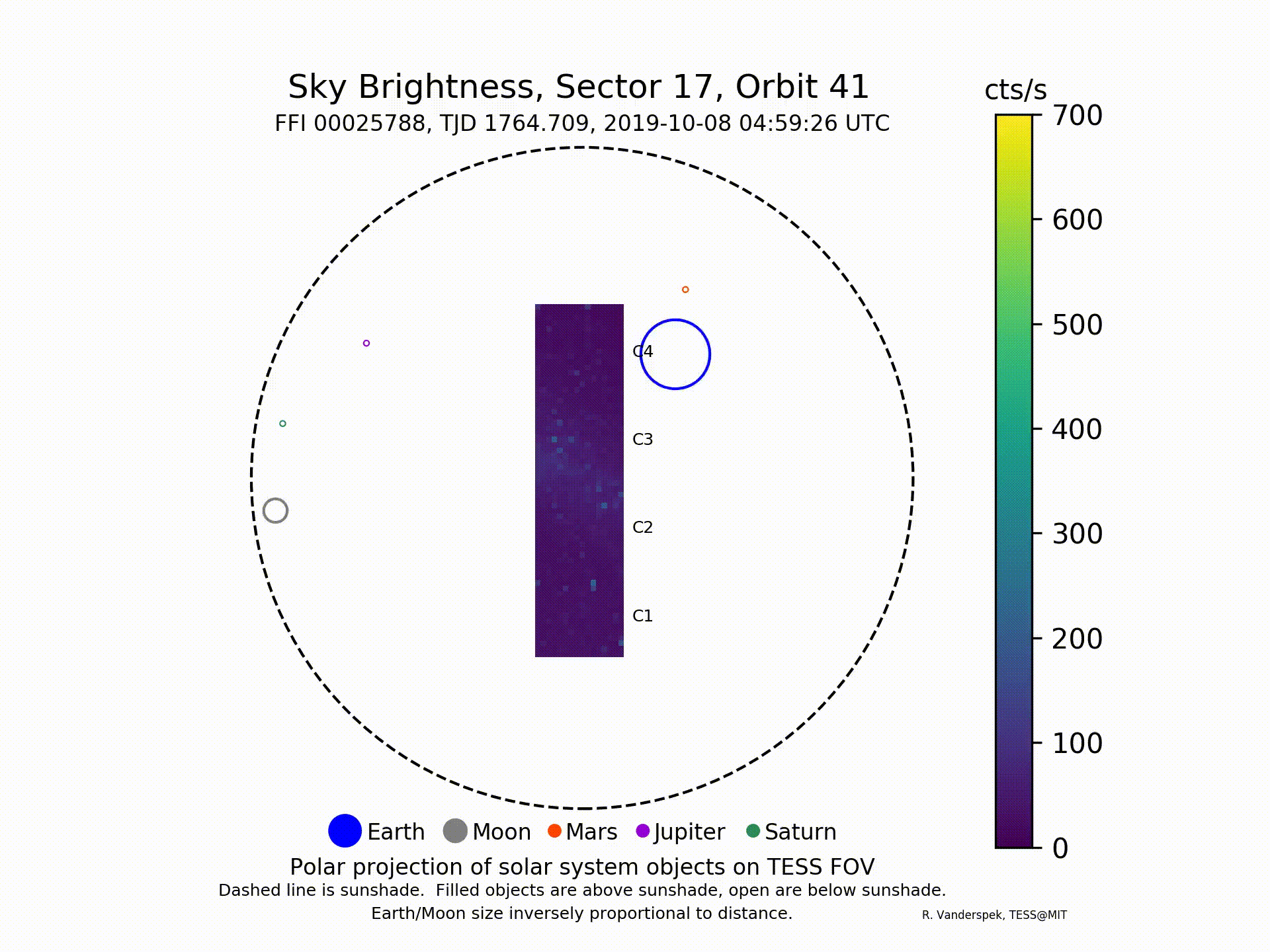The Earth and Moon as seen from TESS
TESS is in an inclined, elliptical, lunar-resonant orbit around the Earth. During the course of a 13.7-day orbit, the location of the Earth and Moon as seen by the instruments will change.
The video at right describes the orbit and demonstrates how the Earth and Moon move with respect to the instrument field-of-view. This video may provide insight into how the levels and types of scattered light might change over the course of an orbit.
Scattered Light in the TESS Cameras
At certain times, the Earth or Moon will be below the level of the sunshade that surrounds the cameras: at these times, no light from that body can enter any of the cameras, and the sky background in the cameras is as low as it can get (TESS’s “dark time”). At other times, the Earth or Moon is above the level of the sunshade, so light from that body can potentially be seen by the cameras, either reflected off of the lens hood or directly through the lens.
Plots of the angle of the Earth and Moon in both spacecraft and camera coordinates can be used to predict the type and level of scattered light for a particular sector. Examples and descriptions of these plots are given below.
Once data from a sector have been downlinked, a sky background movie – – described below – – will be posted to the sector page.
Earth/Moon in Camera Coordinate Frame
The plot at right gives the angle of the Earth (thick lines) and Moon (thin lines) from the boresights of cameras 1-4 (red, green, blue, magenta) as a function of time over a sector, in this case Sector 17. In this example, the Earth gets within ~10° of the boresight of camera 1 at the end of each orbit. Recall that the field-of-view of the camera is 24°x24°, so the Earth is within the FOV at that time. Similarly, the Moon gets within ~2° of the center of the FOV of Camera 1 during the first orbit.
This plot is best used to identify periods when the camera background levels increase to the point where the search for transiting planets is compromised. The background sky level starts getting quite high if the Earth is within 35° of the camera boresight. The horizontal line is at an angle of 25: if the Earth is below this angle, transiting planet searches are generally not possible. The moon is less of a problem – – it’s about 1% as bright as the Earth – – as it is much smaller and further away. The Moon is primarily a problem when it is within the camera FOV.

Earth/Moon in Spacecraft Coordinate Frame
The plot at right gives the elevation (red lines) and azimuth (green lines) of the Earth (thick lines) and Moon (thin lines) in spacecraft coordinates as a function of time over a sector, in this case Sector 17.. The distance between the Earth or Moon and TESS is shown with magenta lines.
This plot is best used to identify periods when the cameras background will include low-level scattered light regions. In most cases, the low-level scattered light patches are created by the Earth, so the thick red line is key: if it is above zero, there’s a chance of patchy scattered light. If both the Earth and Moon have elevations below zero, TESS is in “dark time”, with no additional sources of scattered light.

Sky Background Movies
The movie at right shows the measured sky background over the course of a sector, here Sector 17, in a polar projection in spacecraft coordinates. The locations of the Earth and Moon are shown as blue and gray circles; the location of the sunshade is the dashed circle. The blue and gray circles are filled when the Earth or Moon is above the sunshade and can contribute excess sky background, empty when below the sunshade.
The scale of the movie is enhanced to bring out low-level sky brightness. The normal sky background without scattered light is ~100 cts/s; generally, any additional scattered light from the Earth is ~2-4x sky background and covers 10-15% of the field-of-view of a camera. The sky level gets very high – – sometimes to the point of saturation – – when the Earth or Moon is near or within a camera’s field-of-view.
Also included in this movie are the locations of the three brightest planets that TESS might possibly see.
